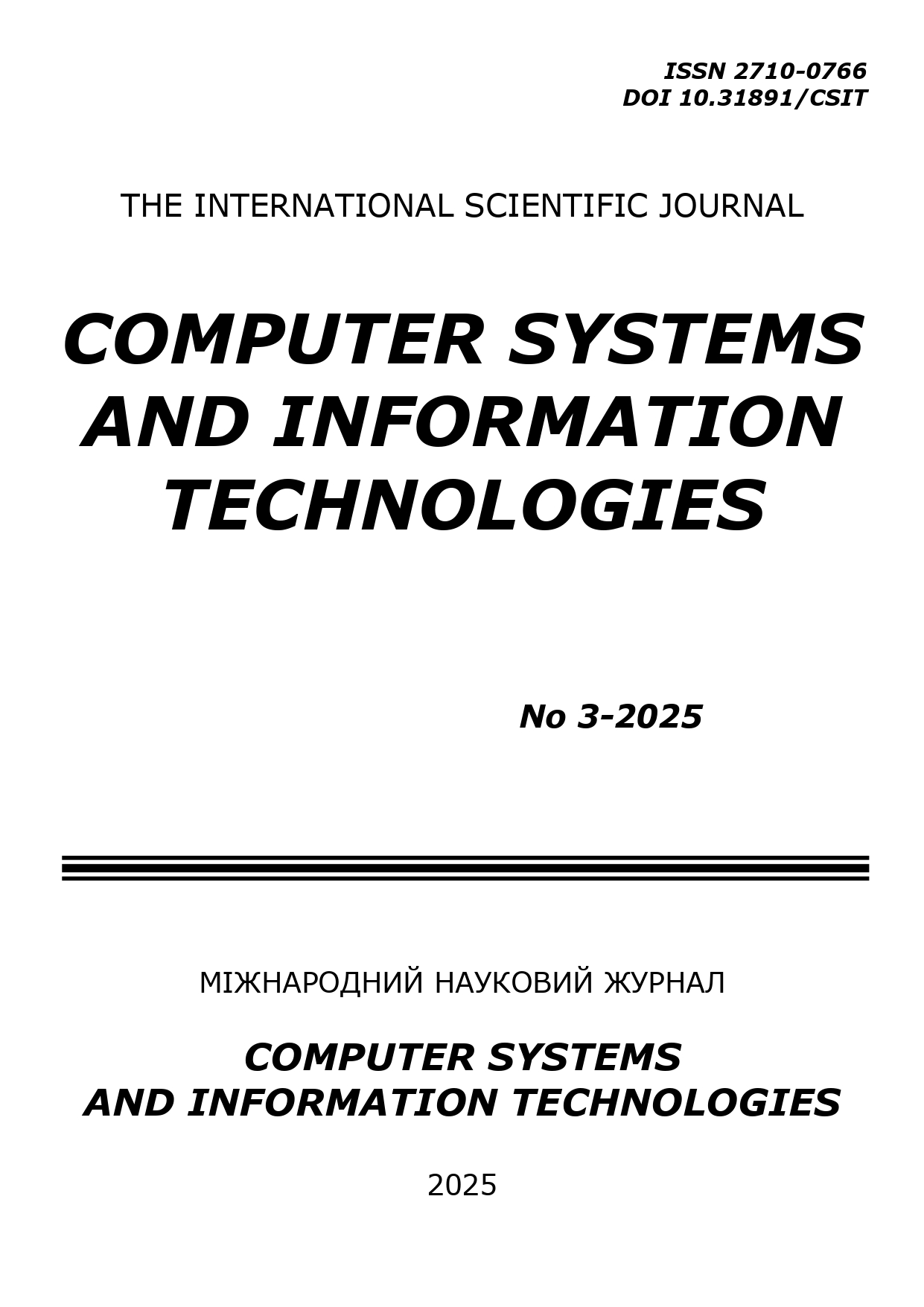INFORMATION AND LASER SYSTEM FOR ASSESSING HARMFUL MAN-MADE EMISSIONS
DOI:
https://doi.org/10.31891/csit-2025-3-3Keywords:
ecosystem, pollution, dust pipeline, information technology, coal, laser, environmental safety, sensorsAbstract
At the current stage of development in the energy, chemical, mechanical engineering, and printing industries, there is extensive use of environmentally hazardous resources such as coal, oil, natural gas, paints and coatings, and polymer materials. The high production intensity driven by market demands leads to increased consumption of energy and raw materials, which in turn causes a rise in concentrations of dust, toxic gases, and harmful liquid emissions into the atmosphere and water systems. This contributes to growing environmental pollution, the real-time assessment of which is often impeded by the limitations of conventional data collection methods.
In response, new approaches have been substantiated for the development of sensors capable of measuring levels of air contamination, particularly dust and toxic substances. These innovations are based on novel physical principles, enabling the creation of laser-based pollution concentrators, sensors utilizing the optogalvanic effect, and integrated systems that combine ion-selective sensors (such as OCM 5M) with measurement platforms. Such technologies enhance the overall effectiveness of environmental monitoring and safety systems.
A comprehensive solution to this issue involves the establishment of global environmental monitoring networks that rely on information and intelligent technologies, as well as the development of next-generation sensor models. Environmental monitoring has remained a critical issue for over a century, as industrial progress — from railroads and textile production to thermal power and petrochemical complexes — has brought not only prosperity but also significant environmental degradation. The impact has been especially pronounced with the advancement of nuclear energy and jet aviation, and further intensified by the consequences of the First and Second World Wars. More recently, the war in Ukraine has introduced a unique set of ecological threats, including explosions, damage to energy infrastructure, and the destruction of oil terminals.
Downloads
Published
How to Cite
Issue
Section
License
Copyright (c) 2025 Любомир СІКОРА, Наталія ЛИСА, Ольга ФЕДЕВИЧ

This work is licensed under a Creative Commons Attribution 4.0 International License.

